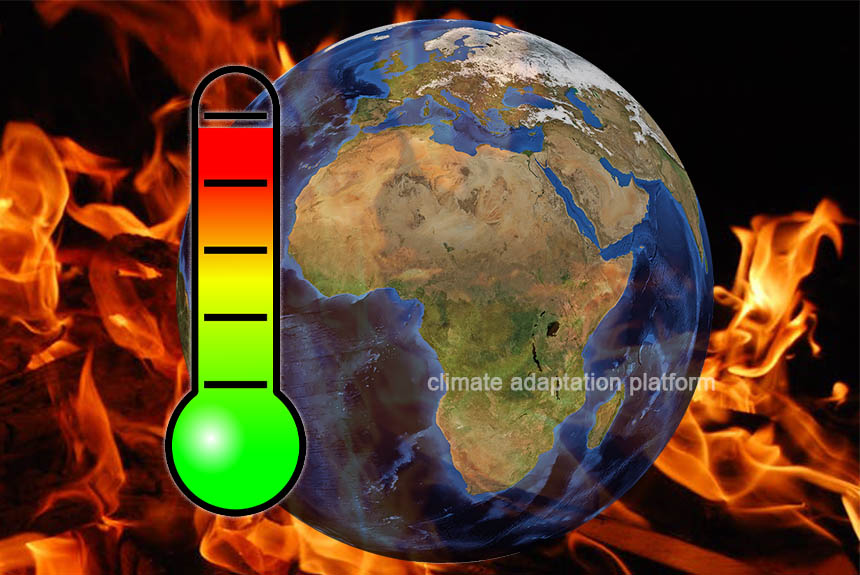Since 2023, temperature records have been shattered one after another.
According to Copernicus, an EU Climate Change service, that year was the hottest on record, with temperatures soaring almost 1.5C above pre-industrial levels.
June marks the 13th consecutive month of being the warmest on the ERA5 record for that month. The climate change service notes that temperatures like these last occurred from 2015 to 2016.
On Sunday, 21 July 2024, records were shattered again as the Earth experienced its hottest day, according to data from Copernicus. The global average temperature reached a new record high at 17.09°C, slightly exceeding the previous record of 17.08°C from 6 July 2023.
Copernicus has highlighted that the maximum daily temperatures in 2023 and 2024 are notably higher compared to previous years. Over the last decade, from 2015 to 2024, daily average temperatures have reached the highest levels in recorded history, indicating a concerning global warming trend.
“On July 21st, C3S recorded a new record for the daily global mean temperature. What is truly staggering is how large the difference is between the temperature of the last 13 months and the previous temperature records. We are now in truly uncharted territory, and as the climate keeps warming, we are bound to see new records being broken in future months and years,” says C3S Director Carlo Buontempo (New record daily, 2024).
The latest data from Copernicus reveals a troubling trend of heatwaves sweeping across various parts of the world, leading to a silent yet significant increase in mortality among vulnerable groups in society (Cecco, 2024).
The elderly, individuals with underlying health conditions, and children are particularly at risk. In addition to the human toll, the hot weather sparks devastating wildfires in Canada, forcing hundreds to flee their homes and placing thousands more on high alert for potential evacuation. These wildfires are also contributing to record-high temperatures (Cecco, 2024).
A heatwave across southern Europe forced Greek officials to close the Acropolis on Wednesday, 17 July, for several hours. On the same day, two firefighters died in Southern Italy while trying to put out a wildfire. Small wildfires have been breaking out almost daily in Italy, particularly in the south and on its islands, amid a heatwave (Becatoros & Barry, 2024).
Six states in the United States, including Arizona, California and Montana, were under excessive heat warnings. Officials suspect that the 300 deaths In Maricopa County, Arizona, were linked to the heat.
Half of 2023 has daily average temperatures exceeding 1.5°C above pre-industrial levels.
NASA’s data shows that overall, Earth was about 1.36°C warmer in 2023 than during the pre-industrial average or between 1850-1900 (Global Temperature, n.d.).
Copernicus data shows that 2023’s global average temperature is 1.48°C warmer than the pre-industrial average.
Beginning in June, temperature anomalies occur regularly, with days reaching 1.5°C average temperatures happening several days in a row.
For the rest of 2023, global daily temperature anomalies above 1.5°C became a regular occurrence, where close to 50% of days in 2023 were 1.5°C above the 1850-1900 level (Copernicus:2023, 2024).
So, the question remains: Has the world failed to keep its commitment to the Paris Agreement by limiting temperature rise to 1.5°C?
Copernicus says no because this target is measured in decadal averages or at least 20 years to be sure that this average temperature anomaly is exceeded, rather than in single years.
However, record temperatures and temporary Paris Agreement breaches in 2023 and 2024 set a dire precedent, and the scorching heat will expose more people to extreme events. Moreover, a sustained rise in temperatures above 1.5°C could trigger multiple climate tipping points.
La Niña, the cool phase of the El Niño-Southern Oscillation (“ENSO”) climate pattern, is expected to usher in later this year or by the August to October season and can bring a respite to the high temperatures.
However, global warming will continue if human activities release GHG into the atmosphere.
Sources:
June 2024 marks 12th month of global temperatures at 1.5°C above pre-industrial levels. (2024, July 10). Copernicus. Retrieved from https://climate.copernicus.eu/june-2024-marks-12th-month-global-temperatures-15degc-above-pre-industrial-levels
New record daily global average temperature reached in July 2024. (2024, July 23). Copernicus. Retrieved from https://climate.copernicus.eu/new-record-daily-global-average-temperature-reached-july-2024
Niranjan, A. (2024, July 23). Sunday was world’s hottest ever recorded day, data suggests. The Guardian. Retrieved from https://www.theguardian.com/environment/article/2024/jul/23/world-temperature-records-shattered-hottest-day-climate-crisis
Cecco, L. (2024, July 22). Canada wildfires drive hundreds from homes as more scorching heat forecast. The Guardian. Retrieved from https://www.theguardian.com/world/article/2024/jul/22/canada-wildfires-evacuation-british-columbia
Becatoros, E. & Barry, C. (2024, July 18). Greece shuts Acropolis, 2 firefighters killed in Italy as southern Europe swelters in a heat wave. AP. Retrieved from https://apnews.com/article/southern-europe-heat-wave-greece-95a9cc96544f0bd40bc16f6790782106
El Niño & La Niña (El Niño-Southern Oscillation) (2024 July 17). NOAA. Retrieved from https://www.climate.gov/enso#:~:text=Forecasters%20have%20issued%20a%20La,for%20the%20Northern%20Hemisphere%20winter.
Global Temperature. (n.d.). NASA. Retrieved from https://climate.nasa.gov/vital-signs/global-temperature
Copernicus: 2023 is the hottest year on record, with global temperatures close to the 1.5°C limit. (2024, January 9). Copernicus. Retrieved from https://climate.copernicus.eu/copernicus-2023-hottest-year-record



Leave a Reply